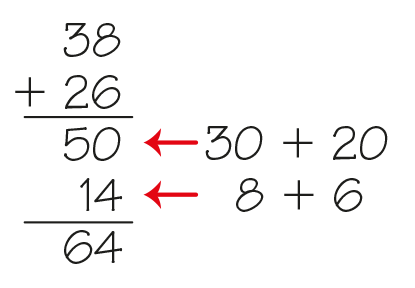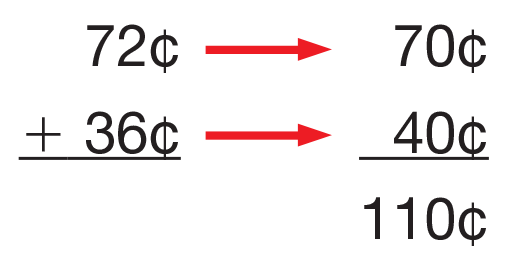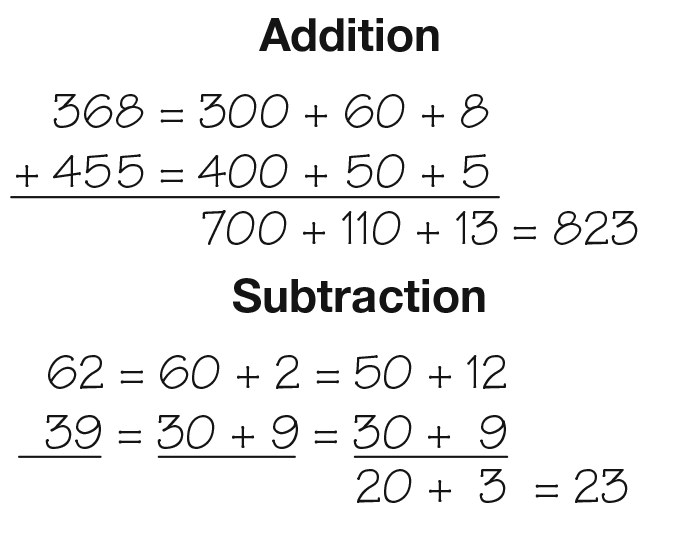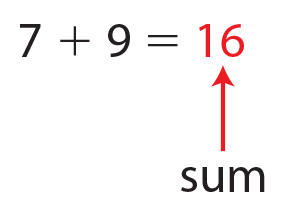In this lesson, students are introduced to two paper-and-pencil methods for adding two-digit numbers—the expanded form and the all-partials methods. Both methods build on the main idea that was introduced in Lesson 4, that each digit represents a number of tens or a number of ones.
Content in this Lesson
- Using and applying place-value concepts to make connections among representations of numbers [E1].
- Representing addition problems using base-ten pieces, number lines, and number sentences [E2].
- Adding two-digit and three-digit numbers using mental math strategies (e.g., composing and decomposing numbers, counting on) using the 200 Chart, base-ten pieces, and number lines [E3].
- Adding two-digit and three-digit numbers using paper-and-pencil methods (e.g., expanded form, all-partials) [E4].
- Estimating sums using mental math strategies (e.g., rounding using benchmarks, using friendly numbers, composing and decomposing numbers, counting on) [E6].
Assessment in this Lesson
| ASSESSMENT | EXPECTATION ASSESSED | MATH PRACTICES EXPECTATION ASSESSED |
|---|---|---|
|
Three Students´ Work Student Activity Book Pages 345–346 |
|
|


















